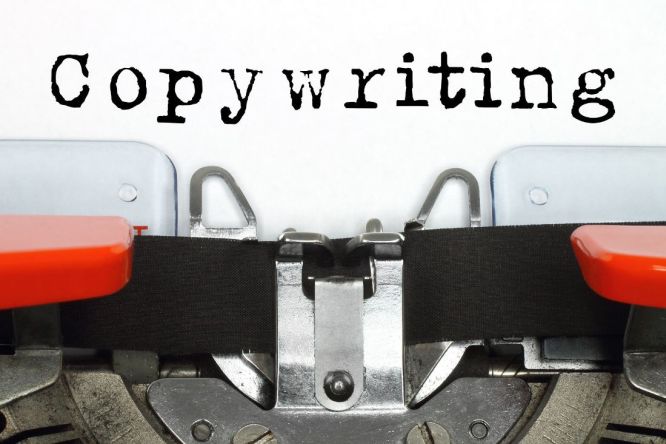10 Copywriting Tips for Guaranteed Results

WHETHER YOU’RE writing a brochure, copy for a newspaper ad, a script for a radio announcement or a page or blog post for your web site, there are some tried and true techniques that can help you make sure that your copy gets the results you’re looking for.
As I work with clients to either coach them through the copywriting process or write copy for them, I offer some very practical advice that I hope helps them achieve their objectives.
Think about writing copy as making a sales pitch to a customer. Your goal is to persuade that customer to do something – most likely to purchase your product or service.
Here are 10 tips from Strategic Communications on how to write effective copy:
1. Put yourself in your consumer’s shoes
People don’t take action unless there is a reason to do so. “What’s in it for me” may seem like a selfish motivation but it is, nonetheless, human nature. In order to effectively persuade a consumer, you need to put yourself in their place and consider why what you have to offer meets their needs. This should not be a quick exercise or one that is taken lightly. Spend some time to really think about the appeals that you could make that would truly resonate with your target audience.
2. Make it as long as you need to
Ignore anything you hear about recommended length of copy. There are no hard and fast rules. Your copy simply needs to be as long as necessary to convey your key selling points. That doesn’t mean, though, that you should ramble on and on. No. You should identify 3-5 key points that directly relate to customer needs and then clearly and concisely provide enough detail about your product or service to convince the customer to take action.
3. Keep it simple
Whether your target audience is teenagers or physicians, you need to convey a simple message. Your audience is busy and your message is competing with literally hundreds of other messages and distractions. Know the points you want to make and make them simply and clearly. Edit your copy mercilessly so that it contains only those “need to know” elements that will guide the consumer in making a purchase decision.
4. Convert features to benefits
Too often copy focuses on the features of a product rather than its benefits. What’s the difference? Features are the attributes of a product or service – a statement of fact. For example: “XYZ orange juice has calcium.” Benefits, on the other hand, answer the all-important question of “What’s in it for me?” In this case: “XYZ orange juice has calcium to help you build strong bones.” Make sure that your copy goes beyond a description of features to clearly focus on the benefits for consumers. What’s in it for them?
5. Don’t be an “also ran”
Make sure that you distinguish yourself from your competition when you’re writing copy. Spend some time reviewing the advertising of your competitors. Note their key copy points. Note the benefits they focus on. Then be different. You’re trying to convince consumers to pick your product or service over the other options available to them. That means differentiating yourself.
6. Be consistent
All of your marketing communication needs to be consistent to be effective. It’s the cumulative impact of your communication that will eventually make an impact with consumers. That’s why it’s so important that you use consistent themes and messages in all of your advertising. That consistency will help to reinforce your product benefits; continued emphasis on the same points will ultimately lead to sales.
7. Don’t forget the details
Remember, your copy is your sales pitch. But unlike a real sales pitch you don’t have the luxury of responding to any questions that the potential customer might have as he or she reads or listens to your pitch. That’s why your copy needs to include all of the key points and information necessary to help the consumer make a decision. Spend some time thinking of the potential customers that consumers might have about your product or service – then make sure you’ve provided answers to these questions in your copy.
8. Consider the “look”
When you’re writing copy for the web or for print – newspaper or magazine ads or brochures – your copy will be working in concert with graphic elements. These elements can help to drive home your point or they can serve as distractions, or worse, detractors from the copy. Make sure you’re considering the “look” of your copy and how it relates to graphic elements, noting how the reader’s eye is likely to “track” through the copy.
9. Read it out loud!
Remember your copy is your “sales pitch.” Whether you’re writing a radio script which will be verbalized, or copy for a web page, you need to consider how it “sounds.” The best way to do this is to read your copy out loud. You’ll be surprised at the little “glitches” you’ll notice when you do this. It’s a simple technique to tighten and improve your sales copy.
10. Know when it’s time to hire an expert
Copywriting is an art. Good copywriters can drive sales of your product or service upward. Poor copy – copy that doesn’t motivate consumers to buy – is simply a waste of your time and money. If your communications aren’t getting the results you’d like, it may be time to find outside help. It can be worth every cent!
Until next time… Onwards and Upwards!

John
If you want to improve your business by using business videos, give John a call 0414 955 743 – advice is totally free of charge.
The More Customers: How to Get Them Facebook Page
The Bottom Line Facebook Business Group



